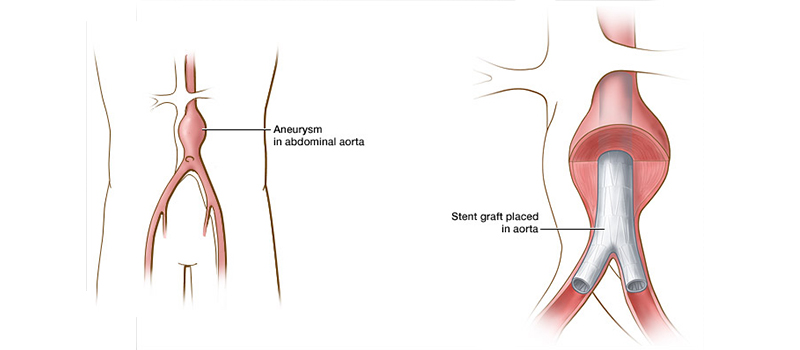An aneurysm is a permanent and localized dilation of an artery with an increase in diameter greater than 50 % of its original size. In most cases, aneurysms occur in the aortic-abdominal district and, unfortunately, do not give particular symptoms. They are mostly discovered occasionally during diagnostic tests or screenings for other reasons.

Thousands of new cases of aneurysms are diagnosed annually in the USA. An abdominal aortic aneurysm rupture is fatal yearly for about 4,500 people.
How do you prevent such a “silent” pathology? And, in case of familiarity with an aneurysm, are there any genetic tests to know if one is at risk?
Causes and Risk Factors
Aneurysms are due to a multifactorial degenerative process, partly attributable to atherosclerosis and partly to many other causes, the subject of numerous studies. The risk factors of the aneurysm are those mainly associated with atherosclerosis and, therefore: advanced age, male sex, smoking, hypertension, abdominal obesity, genetic predisposition, reduced HDL cholesterol levels, and coronary artery disease are the major risk factors. Males are three times more affected than females.
Diagnosis
Currently, the color Doppler is the most effective diagnostic test for screening: it is, in fact, inexpensive, non-invasive, easy to access, and allows one to evaluate the diameters of the artery in the various districts, the morphology of the arterial wall, the possible presence and composition of the thrombus and, through the flowmetric analysis, the type of flow inside the vessel.

The examination is particularly recommended in male subjects over 65 and, regardless of age, in particular subgroups of high-risk patients: smokers and those familiar with abdominal aneurysms. When the pathology is diagnosed, monitoring of risk factors and careful control of blood pressure values is indicated, which requires appropriate treatment if it is not optimal.
Surgery
A minor abdominal aortic aneurysm might not necessitate medical intervention, particularly if its size is below 5 cm and exhibits no growth. Smaller aneurysms have a reduced likelihood of rupture or division. Your healthcare professional will actively monitor your condition and prescribe medications to mitigate the risk of aneurysm rupture.
Two primary surgical approaches exist for aneurysm repair: open surgery and endovascular repair. Open surgery involves a substantial incision in your abdominal or chest region, allowing the surgeon to replace the compromised portion of the aorta with a graft.

In contrast, endovascular repair employs a much smaller incision, reducing the potential for complications and offering advantages, especially for older individuals with a higher susceptibility to complications. Additionally, it facilitates a quicker recovery. It’s important to note that not all Aneurysms are suitable for endovascular repair. Your healthcare provider will discuss with you to determine the most appropriate treatment approach.
Research is Ongoing
Recently, several studies have focused on identifying the genetic alterations predisposing to aneurysm formation. This would allow at-risk people to be placed in advance through a DNA test. Those performed so far, however, are still in the experimental stage and, while providing promising results, have not been standardized on a large scale and cannot yet be used.
Numerous types of research are also focused on identifying objective parameters that will allow ” personalized preventive medicine” soon.
Talk to Us
At Washington Vascular Specialists, we deliver optimal care and advanced surgical solutions for abdominal aneurysms and various vascular conditions. Our expert team is dedicated to providing top-notch treatment. Please book an appointment with us today to ensure your vascular health is in capable hands.
